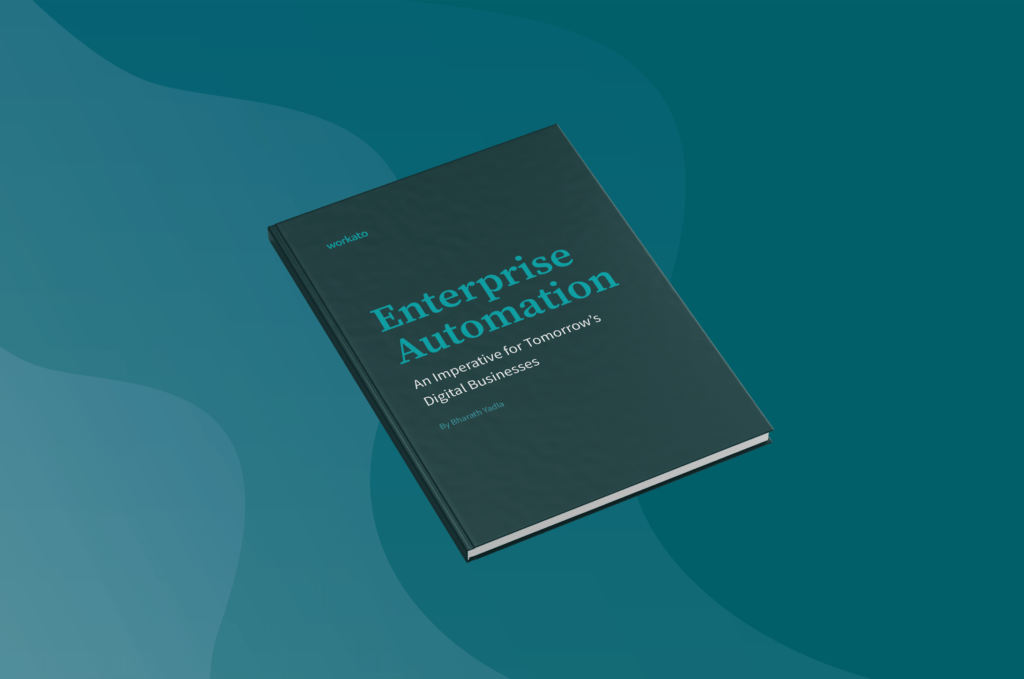Today’s era of automation is light-years ahead of the past. On par with subsequent Industrial Revolutions, each era of automation has focused on a specific type: the First on mechanization, the Second on mass production, the Third on computers and communications, and now the Fourth on smart machines and humans together. Today’s era is homing in on formerly human-driven processes across business, including HR, finance, sales, IT, and marketing. However, this latest era goes beyond eliminating repetitive tasks—it looks to empower digital transformation and, eventually, realize new revenue streams.
Despite its use, all automations require processing, data movement, analytics and, more often than not, AI- or ML-driven bots that will carry out these integral tasks and processes for you. In short, automation is driven by a plethora of technologies aiming to integrate people, processes, data and technology at scale. Here are a few ways automation is driving digital change within enterprises in an unprecedented manner.
Customer Experience Automation
The role of a personal assistant or secretary today is aided by bots like Siri, Alexa and Google Home being connected to apps like Calendly, Xobni and Mail. Extending this capability to front-office functions like marketing, sales and support could enable enterprises to deliver better customer experiences that improve customer development, acquisition and retention. At the same time, it could also provide highly innovative and personalized experiences to customers—like how Bank of America’s Erica, a smart financial assistant, can complete fairly complex tasks like scheduling payments, tracking your credit score, and even offering tips on how to save money based on your spending habits. With today’s technologies and tools, bots like Erica could be used for any front office function, regardless of industry.
Employee Experience Automation
Automation is also improving internal experiences as well, like employee onboarding. Across industries, onboarding can be an extensive process—from recruitment and training, to provisioning with approvals and evaluations. In a world where competition is higher than ever, companies have realized the value of automation in creating seamless employee experiences from Day One. Take for example retail brand Zappos, which provides a flawless and totally integrated experience through intelligent automation that gets smarter with every employee it onboards.
Back Office Business Automation
With the advancement of digital native technologies like cloud, mobile, and iPaaS, back office processes like IT, accounting, HR and compliance can be integrated and automated effectively and efficiently. XPO Logistics, for example, uses automation for inventory tracking and order processing. By utilizing these workflows, it can largely avoid manual mistakes like inserting incorrect order numbers, which can cause bottomline revenue depletion by increasing inventory holding costs.
Front Office Business Automation
This type of automation focuses on enhancing CX but is driven by front office application automation. Consider a traditional bank: all the front office functions drive heavy investments and drive towards a low CI (cost-to-income) ratio. Challenger banks, then, can gain an advantage by driving their CI ratios lower than traditional banks by automating front office processes like check deposit. Automating such a task could eliminate hours of administrative work, in a market that’s increasingly mobile on both the consumer and business sides.
Operational Task Automation
This type of automation focuses on minimizing repetitive tasks to drive operational savings and, in turn, enable higher-level human labor. For example, at Amazon, employees who previously lifted and stacked boxes in its warehouses are now robot operators, monitoring the automated arms and resolving issues such as the interruption of the flow of objects. Robotic process automation (RPA) streamlined these routine tasks, resulting in significant operational savings and enabling complementary human labor that ultimately benefited the business.
In order to operationalize all of these applications of automation, however, organizations need a new approach that makes the most of a wide variety of automation technologies—not just RPA or UI-driven automation. Instead of merely being a survival strategy, enterprise automation will be the new norm for any digital enterprise moving forward.
